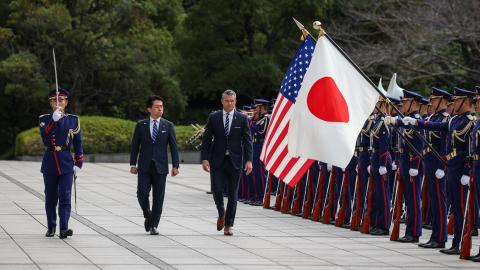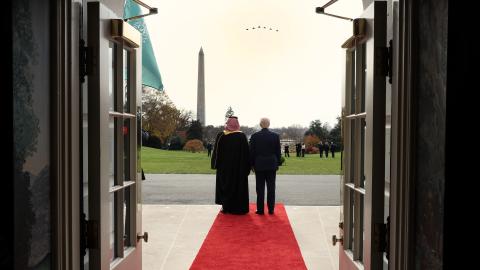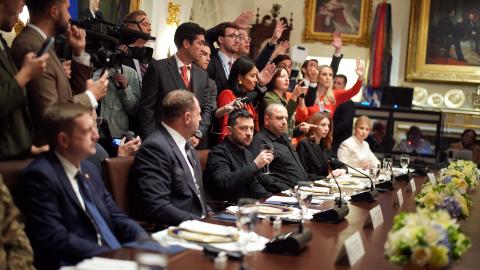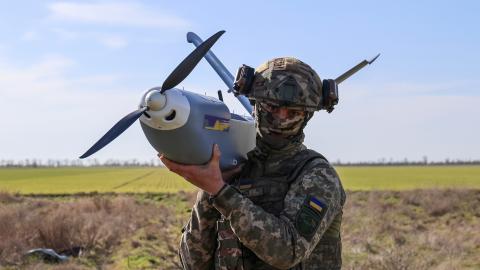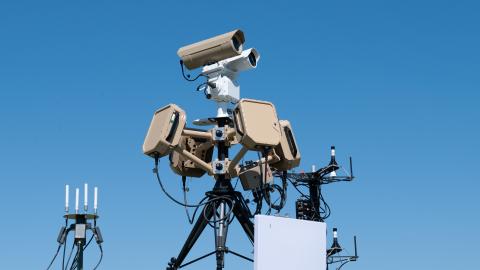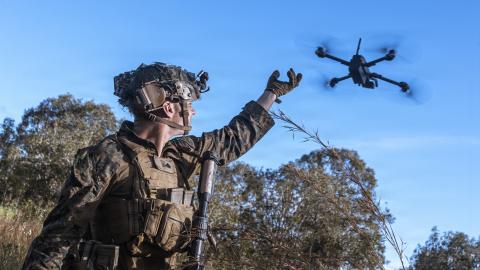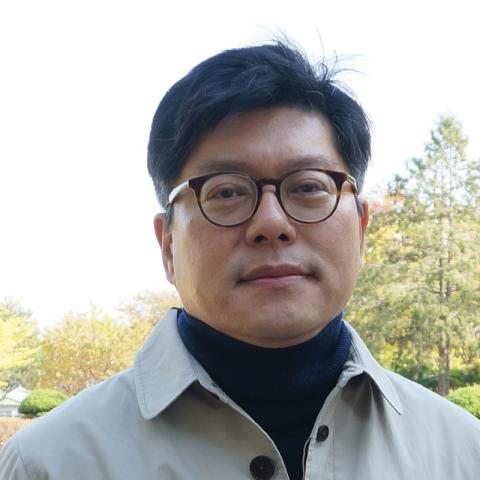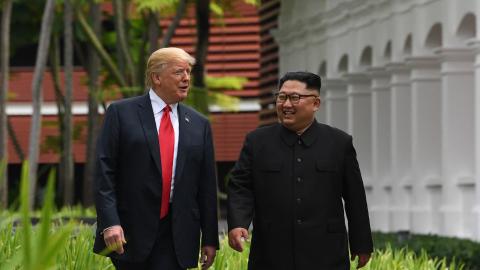Introduction
June 12, 2025, marked the seventh anniversary of the Singapore Summit, the historic first meeting between a sitting United States president and the supreme leader of the Democratic People’s Republic of Korea (DPRK or North Korea). That unprecedented 2018 encounter between President Donald Trump and Kim Jong Un briefly raised hopes for a breakthrough in US-DPRK relations. However, two subsequent meetings in 2019—in Hanoi, Vietnam, and at Panmunjom on the North Korea–South Korea border—failed to sustain the initial momentum. For several years since, high-level diplomacy has remained dormant. Now, a confluence of political developments is rekindling interest in renewed engagement. President Trump has stated he has relayed messages to Chairman Kim aimed at restarting dialogue. Meanwhile, new South Korean President Lee Jae-myung emphasized in his inaugural address the need to improve inter-Korean relations, signaling a potential shift in Seoul’s approach. President Lee’s decision to turn off loudspeakers on the demilitarized zone (DMZ) represents a low-risk but clear message that Seoul wants to improve relations with the North. Although Pyongyang’s intentions remain opaque, Chairman Kim has notably refrained from criticizing President Trump or escalating tensions in the wake of South Korea’s special election. In the opaque calculus of North Korean diplomacy, such restraint may signal a tentative opening for renewed talks.
Hudson Institute and the Chey Institute for Advanced Studies jointly produced a new report titled Deals, Deadlocks, and Deterrence: Scenarios for Renewed US–North Korea Diplomacy. Released on the seventh anniversary of the Singapore Summit, the report outlines a range of plausible scenarios through which bilateral diplomacy might be revived. While there are understandable national security reasons why negotiations have not been prioritized, and why Pyongyang has rebuffed recent overtures, the current moment warrants a serious reassessment. Anticipating the resumption of talks, the report’s contributors focused less on whether diplomacy will resume and more on how it might be structured to serve US national security interests and promote stability on the Korean Peninsula. The goal is not simply to reopen dialogue, but to ensure that any future engagement is grounded in strategic clarity and a realistic understanding of the risks and opportunities involved.
This policy memo builds on the main report by incorporating the perspectives of leading South Korean experts, including insights shared during a virtual workshop convened shortly after Democratic Party of Korea candidate Lee Jae-myung was confirmed as the winner of the June 3 presidential election. Drawing on those exchanges, this addendum highlights key policy considerations that emerge from the six scenarios presented in the core report. It distills the most relevant strategic takeaways and elevates voices from Seoul that are central to shaping the next phase of US–Republic of Korea (ROK) engagement with North Korea.
Six Scenarios
In Washington, there is no consensus on how best to approach diplomacy with Pyongyang. The six essays in the joint report capture the diversity of views in Washington, yet they represent only some of the major potential diplomatic pathways. Below are thumbnail sketches of the report’s six scenarios.
Scenario 1: Frank Aum advocates for a return to consistent engagement with North Korea, reminiscent of the “golden era” of the 1990s. Aum argues these negotiations should result in an agreement, interim at the very least, that lowers tensions on the peninsula and improves relations. To get beyond the impediment to an agreement in Hanoi, Aum says that North Korea would have to concede “a significant part of its nuclear program while the United States would have to concede significant relief from multilateral sanctions.” He contends denuclearization is no longer an achievable goal, and the end goal should be peaceful coexistence.
Scenario 2: Jenny Town wants policymakers to have a more realistic understanding of North Korea’s ability to survive. Assuming “the country will likely be around for the long haul,” Town wants to prioritize peace over denuclearization, thereby transforming the basic relationship from which to work forward. “For too long,” writes Town, “peace treaty negotiations have been kicked down the road for a myriad of reasons,” and she argues that “durable peace and stability on the Korean Peninsula require a final resolution to the Korean War.” An agreement on ending the war could open up negotiations on the nuclear issue, risk reduction, the pace of normalization, and regional security.
Scenario 3: Keith Luse seeks to leverage the personal rapport of President Trump and Chairman Kim to achieve an atmosphere conducive to a gradual, long-term process of confidence-building. Luse sees President Trump’s “personal approach to diplomacy” as instrumental to realizing stable coexistence. Perhaps through quarterly leaders’ meetings or virtual interactions, the two leaders could create an atmosphere for risk reduction and improved ties while preserving deterrence.
Scenario 4: Joseph DeTrani recommends cautious, action-for-action diplomacy ending in normalization. From his negotiating experience with the North Koreans, Ambassador DeTrani is convinced that Kim Jong Un would like to normalize relations with the United States and that Pyongyang does not trust China. He thinks a new round of US-DPRK diplomacy could begin with a “personal letter to Mr. Kim from Mr. Trump, proposing reengagement.” While progress might be slow, he believes that a North Korean halt to fissile material production could be a quid pro quo for sanctions relief. Deep-seated distrust, domestic political constraints, and a reluctance to take bold risks all limit the potential for transformative change in both Washington and Seoul. For democratic leaders, moving quickly on North Korea remains especially difficult.
Scenario 5: Doug Bandow wants to defuse relations by recognizing the DPRK as a de facto nuclear weapons state, but does not want rushed summits or elaborately negotiated bargains. Since the last Trump-Kim meeting at the DMZ, “the DPRK is much closer to its objective of possessing missiles topped by multiple warheads capable of hitting the mainland United States.” Bandow prefers paring back objectives, falling back on restraint and deterrence, and allowing the two Koreas space to think through better relations. “Although the Trump administration must act in America’s interest, it should keep Seoul informed and rule nothing out, including friendly nuclear proliferation by the ROK.” His pathway offers a hyper-realist perspective rooted in classical deterrence theory.
Scenario 6: Vipin Narang outlines a strategy aligned with the Biden administration’s paradigm—one that seeks to deter any potential North Korean nuclear use while also dissuading South Korea from pursuing an independent nuclear arsenal. The dual challenge, as he frames it, lies in both mitigating the direct threat posed by North Korea and preventing secondary proliferation, particularly on the Korean Peninsula. A South Korean nuclear breakout could trigger cascading regional consequences, including heightened conventional tensions and potential arms races. As the Trump administration has yet to articulate a coherent North Korea strategy, a key question is whether it will adopt elements of the previous administration’s approach or chart a fundamentally different course. While Narang supports diplomatic engagement with Pyongyang, he emphasizes the need for the United States and South Korea to rebuild leverage before “rushing into a deal out of desperation.” Reinvigorating alliance deterrence capabilities, in his view, is essential to restoring a credible negotiating position.
A central fault line running through the six scenarios concerns the sequencing of engagement: Should policymakers prioritize improving the political relationship with Pyongyang, or focus first on tangible threat reduction measures? Some contributors argue that entrenched mistrust and repeated diplomatic failures are the root problems, and that transforming the political relationship should come first. Others contend that concrete steps such as containment, arms control, or limited denuclearization are both more feasible and more urgent.
While all American and South Korean participants agree that diplomacy is necessary, they diverge on its urgency and strategic sequencing. With the United States facing pressing challenges involving China, Russia, and the Middle East, it remains unclear whether North Korea will command sufficient attention at the highest levels of US foreign policy. Yet the personal rapport between President Trump and Chairman Kim could provide an unconventional opening for renewed dialogue.
Across the essays, a pragmatic consensus is emerging around the idea of stable coexistence with a nuclear North Korea. Full denuclearization remains a long shot, but a more predictable and restrained DPRK may be achievable. However, this concept of coexistence raises sobering policy dilemmas: What concessions would be required to stabilize such an arrangement? And what strategic and normative risks might it carry?
South Korean Questions
Below are summaries of the South Korean experts’ analysis concerning possible US-DPRK negotiations and the report’s scenarios.
When and under what conditions will a US–North Korea summit be held?
As the seventh anniversary of the 2018 Singapore Summit passes, experts are again paying attention to the prospects of another high-level US–North Korea meeting. Yet the timing and conditions for such a summit remain highly uncertain. President Trump is currently preoccupied with the war in Ukraine, conflict in Gaza, nuclear negotiations with Iran, and the intensifying US-China strategic rivalry centered on the Taiwan Strait. Amid these competing priorities, North Korea has slipped down the foreign policy agenda. Some observers argue that a US-DPRK summit may no longer be a realistic priority. However, shifting domestic and economic pressures could prompt the administration to seek a visible foreign policy win. In that context, renewed engagement with North Korea could resurface as an appealing option. Both US strategic interests and President Trump’s personal inclination toward high-profile diplomacy will likely factor into any decision to reengage Kim Jong Un.
If a US–North Korea summit takes place, which of the six scenarios is the most feasible?
Scenarios 1 and 6 (Aum and Narang) appear to have limited practical feasibility. It is unlikely that President Trump possesses or will develop a comprehensive roadmap for addressing the complex military and security dynamics on the Korean Peninsula. Given his preference for concrete, headline-worthy outcomes, Scenario 6, which is focused on long-term strategic positioning and deterrence without immediate deliverables, also seems improbable. Unlike the 2019 Hanoi Summit, a failed negotiation under current political conditions would carry greater domestic and reputational risks. As a result, President Trump is more likely to pursue a diplomatic path that offers visible and immediate gains. Under this logic, Scenarios 3, 4, and 5 (Luse, DeTrani, and Bandow) emerge as the most plausible outcomes, each offering more actionable, results-oriented avenues for engagement.
What is the likelihood that negotiations will continue over the remainder of President Trump’s second term?
Negotiations will likely not be sustained or proceed incrementally throughout the remainder of President Trump’s second term. Even if negotiations begin, they may halt if North Korea strengthens its demands. If Pyongyang seeks security guarantees or regime protection after obtaining economic benefits, continuing negotiations will become difficult. This is because the South Korean government and US military strategists will have difficulty in offering concessions on military issues. In that case, negotiations will likely begin under Scenario 2, then proceed to Scenario 3 for intermediate negotiations, and ultimately break down into a phase of disagreement and confrontation.
What is the key to sustaining negotiations and expanding the agenda?
Generating momentum for sustained negotiations will be a challenge. From a security perspective, many US and South Korean experts and officials will want to ensure that President Trump’s outreach to Chairman Kim grapples with Pyongyang’s military threats. While it may be attractive to reach political deals without touching North Korea’s nuclear weapons, missiles, and other weapons, South Korean experts involved in this joint project think Washington should expand the scope of diplomacy to incorporate meaningful steps toward reducing North Korea’s potential threat. The DPRK nuclear issue includes not only the narrow agenda of denuclearization but also broader issues, such as ensuring regime security and establishing a peace regime on the Korean Peninsula.
Which scenario would be most desirable for South Korea?
The most desirable pathway for President Lee may begin with the step-by-step approach and gradually evolve toward the more comprehensive framework that Frank Aum proposed in Scenario 1. This trajectory would start with focused negotiations on the North Korean nuclear issue and progressively broaden to include inter-Korean military confidence-building measures, discussions on a peace regime for the Korean Peninsula, and eventual normalization of US–North Korea relations. Throughout this process, denuclearization should remain the long-term objective, with Pyongyang taking concrete and verifiable steps in the medium term. In parallel, Washington and Seoul would implement a phased easing of economic sanctions, calibrated to North Korea’s actions. Building mutual trust between the United States and North Korea and between the two Koreas will be essential to sustaining diplomatic momentum and laying the groundwork for a durable peace and stable coexistence.
What positions will China and Russia take?
If a US–North Korea summit begins to produce meaningful outcomes, the positions of China and Russia will become increasingly important. While Beijing is not enthusiastic about a nuclear-armed and problematic North Korea, it also does not favor a scenario in which the United States and North Korea move closer together through a successful summit. Thus, if Washington and Pyongyang make progress on denuclearization, the challenge will be how to cope with future US–North Korea relations within the broader context of US-China strategic competition. Less clear is what President Lee’s options are for dealing with an expanding Russia–North Korea defense relationship; presumably, the transfer of military technology that threatens South Korea will require strong responses from Seoul, whether in the form of South Korean military modernization or US-ROK alliance measures.
Which scenario would be least desirable for South Korea?
The least desirable scenario for South Korea would be one that begins with Scenario 2, passes through Scenario 3, and leads to Scenario 4. In this sequence, phased negotiations may lead to initial steps toward denuclearization and allow North Korea to gain certain benefits such as partial sanctions relief. However, if negotiations fail at the stage where North Korea demands regime security guarantees or normalization of US–North Korea relations, and only a partial agreement is reached, Pyongyang may resort to provocations such as nuclear tests or missile launches. Ultimately, South Korea would face a highly unfavorable scenario if mutual criticism and friction between the United States and North Korea persist without substantive outcomes and the process devolves into prolonged stalling.
Is a US–North Korea summit beneficial in itself?
A US–North Korea summit that leads to an undesirable outcome may prove worse than not holding one at all. Should the summit fail to achieve tangible progress on North Korea’s denuclearization, skepticism regarding denuclearization will only deepen. There could be a growing perception that negotiations and diplomacy cannot achieve denuclearization, and that pressure and sanctions are more effective tools. In such a case, China and Russia would likely criticize the United States while defending North Korea. Pyongyang, in turn, may pursue provocations such as nuclear tests or missile launches to assert its legitimacy. Russia may also feel less constrained by international norms and transfer advanced military technologies to the DPRK. In order to prevent such outcomes, policymakers should analyze the potential strengths and weaknesses of a US–North Korea summit from a long-term perspective and approach the process with caution.
If a summit takes place, what policy should South Korea pursue, and what is its current position?
Unlike in 2018, North Korea now treats South Korea not as a potential partner but as a hostile foreign state. Pyongyang sees little value in engaging with Seoul, viewing it as incapable of influencing Washington to offer favorable terms in any future negotiations. If US–North Korea talks collapse, sanctions relief will remain out of reach, further exacerbating the DPRK’s economic difficulties. Yet even in this scenario, Pyongyang is unlikely to seek expanded economic cooperation with the South. Instead, it will likely turn to Moscow and Beijing, deepening its economic ties with Russia and seeking continued support from China. These structural dynamics have diminished South Korea’s leverage in the context of a prospective US–North Korea summit. Recognizing this, President Lee may adopt a more incremental approach—aimed at lowering tensions and building goodwill—before advancing more ambitious proposals such as a peace accord or broad sanctions relief. As part of such efforts, he may seek to revive inter-Korean confidence-building initiatives, including the 2018 Comprehensive Military Agreement, the Kaesong Industrial Complex, or resumed tours to Mount Kumgang. Alternatively, President Lee could revive the dual-track policy of 2018, wherein Seoul pursued a peace regime while Washington concentrated on denuclearization. Yet this approach risks renewed policy divergence between allies. Managing the tempo and direction of US-ROK diplomacy and ensuring they remain aligned will remain one of the most persistent and difficult challenges moving forward.
What joint preparations can South Korea and the United States undertake?
The Lee Jae-myung administration should thoroughly prepare a mid- to long-term roadmap in coordination with the United States to resolve the North Korean nuclear issue. Even if President Trump seeks a personal approach to the problem, sustained cooperation with relevant US agencies is essential to ensure understanding of the core issues and the steps necessary for a resolution. In South Korea, many analysts are concerned that Washington will sideline Seoul during the negotiation process, or will prioritize its security interests over South Korea’s. Therefore, South Korea and the United States need to engage in prior consultations, perhaps through various US-ROK working groups, to ensure that negotiations with North Korea do not undermine Seoul’s security under the premise of alliance coordination.
What should the Lee Jae-myung administration be cautious of?
In his inauguration speech, President Lee Jae-myung stated that his government would “maintain strong deterrence against nuclear threats and provocations” through a strong military and the ROK-US alliance. He continued, “At the same time, we will reopen communication with North Korea and build peace on the Korean Peninsula through dialogue and cooperation.” Seoul needs to consider a scenario in which President Trump prioritizes normalization of US–North Korea relations and sanctions relief without thoroughly preparing or negotiating complete denuclearization. If the Lee administration pursues dialogue simply for the sake of dialogue without stringent demands or verification on the nuclear issue, it may face serious backlash in the future. Crucially, attempts to improve inter-Korean relations should not lead to the implementation of an incomplete nuclear policy jointly pursued by the Trump and Lee administrations.
How should the Lee Jae-myung administration be preparing for possible negotiations?
From Kim Jong Un’s perspective, economic revitalization is the most critical element for long-term regime survival. So the Lee administration should cooperate with the United States to guarantee the security of North Korea’s regime, system, and state while simultaneously inducing complete denuclearization. To this end, it needs to prepare concrete alternatives and demonstrate sincere readiness to support the DPRK’s economic development and attainment of normal statehood in the international community. Through such joint efforts between South Korea and the United States, they can pursue denuclearization based on the vision of a nuclear-free security environment and post-denuclearization economic growth.
What should be taken into account regarding China?
China may harbor concerns that if North Korea normalizes relations with the United States, abandons its nuclear arsenal, and embraces economic reform, Pyongyang could gradually shift away from Beijing’s geopolitical orbit. To address these concerns, South Korea and the United States should undertake sustained diplomatic engagement to reassure Beijing that North Korea’s denuclearization need not undermine China’s strategic interests. It is important to convey that a denuclearized and economically revitalized North Korea can coexist with China’s regional influence and that such developments need not be viewed through the zero-sum lens of US-China strategic competition. Constructive reassurance and transparent communication will be essential to minimizing Chinese resistance and fostering regional stability.
What long-term considerations should Washington and Seoul address?
If a US–North Korea summit unfolds in line with the pathways outlined in the Aum and Town scenarios, South Korea and the United States will need to jointly develop a durable, long-term strategy that can last beyond the Trump administration. While the personal rapport between President Trump and Kim Jong Un may help catalyze talks, it is insufficient on its own to sustain progress toward denuclearization. To ensure continuity and credibility, both governments should commit to refining and institutionalizing a mid- to long-term roadmap—one that can withstand political transitions and maintain diplomatic momentum regardless of changes in leadership.
